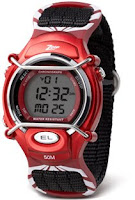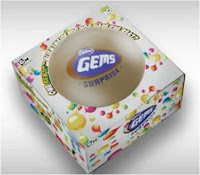The Four Pillars of Customer Focus
Originally Published Here at Adclubbombay.com
Customer focus is one of the most used jargons in the marketing lexicon. Despite being accepted as an important strategy, many firms have not yet been capable of delivering exceptional customer service and focus in their operations.
Customer focus is a choice and the choice has to be made at the highest management level. Being customer focused is an expensive proposition. It is resource intensive and needs hands-on management from senior leadership of the company. More than money, customer focused strategy depend on human resource. The investment needed for maintaining customer focus is the time and dedication of all management levels towards the goal of service excellence. Most of the firms which aspire to be customer focused fail because of the lack of involvement of top management in customer-related activities.
Most companies invest their resources in creating processes and automating customer touch points. After this investment, the management leaves the customer management to these insensitive machines and algorithms. The entire process will be a waste unless there is a human element in it.
For any organisation who aspire to be customer-centric should start by building a strong foundation .Without a strong foundation, customer centric activities will lack in their effectiveness.
Customer knowledge, Culture, Human Resources and Conflict resolution are the four pillars of a customer focused organisational strategy.
Customer Knowledge
Customer profiling is the first step towards building customer focus. This is one of the most difficult phases in the quest towards customer focus. The depth of customer focus in a company is directly proportional to the depth of the customer information collected. The effectiveness of all customer-related promotions will depend on the extent to which the collected information is being used at the customer touch points.
For example in a business to business environment, firms are sitting on a huge pile of customer information. The information from the past interactions with the customer, the information from the past sales data are all available with the company. How well this information is available to the sales force will determine the effectiveness of any customer related campaign run by the company. While most firms collect customer information, this information are seldom updated or distributed to the concerned personnel.
Another important task for the managers is to identify the customer group that the organisation should focus on. It is near impossible for organisations to satisfy every customer. Some customers may be unprofitable for the company to serve. The management should be able to take informed decision on the customer groups which it will have to focus on. Once these groups are identified, firms must orient its organisation to deliver exceptional service to these customers.
Customer-Centric Organisational Culture
The second most important pillar of customer focused organisational strategy is the culture. Customer-centric organisational culture is where the entire organization is tuned to deliver exceptional service to the customer. Customers become the centre around which the organization is built.
The Chief Executive becomes the Chief Customer Officer. Every process and actions of the firm is prepared with customer in mind. Although this proposition may sound theoretical, companies like Marriott, P&G and FedEx have built their business around a customer focused strategy.
Human Resource
People form the third pillar of a customer focused organisation. The employees are the vital interface between the customer and the company. Customer focused organisations invest huge resources in developing a team of highly trained customer- care executives.
It is critical for organisation to understand the importance of front-line employees who deal directly with the customers. These employees represent the face of the organisation. There has to be clear role clarity for employees who interact with the customers. Customers always prefer a single contact point with the selling organisations. Customer focused organisations thrive because their entire organisation is created to optimize customer touch points. The customer –care executives are given enough authority and responsibilities to deal with customer requirements. Cases which are beyond their authority are escalated to higher levels.
Conflict Resolution.
Handling customer conflicts is the litmus test of the effectiveness of any customer-centric organisation. When there are no conflicts or complaints, customer management is not a daunting task.
The real depth of customer focus is revealed when there is a complaint or a conflict. As customers, we all have faced situations where our complaints go unresolved. A recent survey conducted on mobile phone users revealed that unresolved complaint was one of the major reasons for customer churning in Post-paid customer segment.
Customer focused organisations have a robust complaint handling mechanism backed by strong process and also sufficient budgets. These organisations have a system where complaints or conflicts are addressed within a stipulated time frame. The unresolved complaints are escalated to higher levels of management and necessary actions are taken at each levels of management for proper remedial actions.


